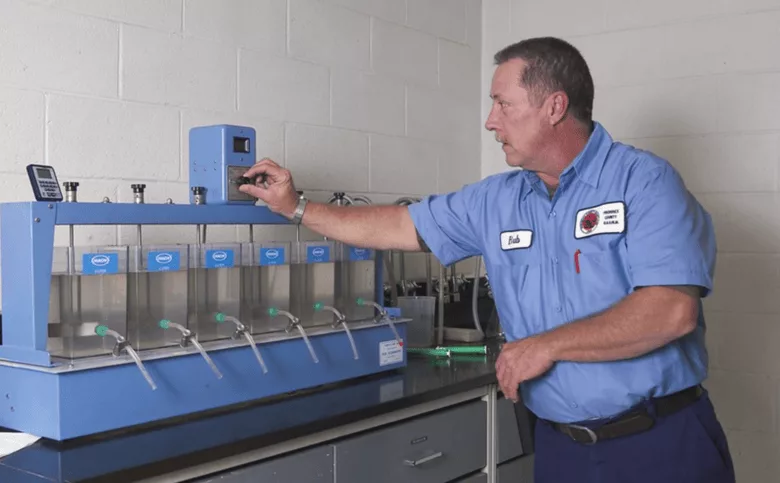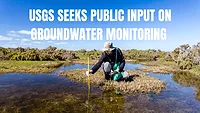EPA Seeks Public Input on PFAS Risk Assessment in Wastewater Byproducts
Human health risks associated with exposure to ‘sewage sludge’ or ‘biosolids’ examined

The Environmental Protection Agency (EPA) is inviting public comments on a draft risk assessment examining the presence of per- and polyfluoroalkyl substances (PFAS) in “biosolids”—commonly referred to as “sewage sludge.” These biosolids are used as soil conditioners or fertilizers on agricultural, forested, and other lands, and may also be disposed of in landfills or incinerated.
On Jan. 15, 2025, the EPA issued the document, “Draft Sewage Sludge Risk Assessment for Perfluorooctanoic Acid (PFOA) and Perfluorooctane Sulfonic Acid (PFOS),” which is a scientific evaluation of the potential human health risks associated with the presence of toxic PFAS chemicals in biosolids.
Because PFAS chemicals can build up in living things and cause various health issues, the EPA took action on those chemicals during 2024, including issuing a final rule on April 10, 2024, that sets drinking water standards for five individual PFAS substances, including PFOA, PFOS, PFNA, PFHxS, and HFPO-DA. On April 19, 2024, the EPA issued a second PFAS rule designating PFOA and PFOS as hazardous substances because those chemicals have been linked to cancers, immune and developmental damage to infants and children, and have some impact on the liver and heart.
Biosolids, or sewer sludge, is a byproduct from wastewater produced by households, businesses, and industrial dischargers, which is conveyed to a wastewater treatment plant, and ultimately treated. Those treatment processes also produce the semi-solid, nutrient-rich products of sewage sludge or biosolids (EPA typically uses the term “biosolids” to mean sewage sludge that has been treated to meet regulatory standards and is thereby suitable to be land applied as a soil conditioner or fertilizer). In turn, biosolids can be beneficially reused as land applied fertilizer on agricultural fields or on nonagricultural lands to promote plant health and productivity, according to EPA.
EPA says the draft risk assessment’s findings reveal “there may be human health risks associated with exposure to the ‘forever chemicals’ PFOA or PFOS with disposing of sewage sludge in landfills, or by incineration, or as a soil conditioner or fertilizer.”
Furthermore, EPA says its analysis finds that the risks of exposure to PFOA and PFOS through biosolids increase proportionally with the amount of those chemicals in the biosolids. The EPA says that means if the concentration of PFOA or PFOS in biosolids, or the amount of biosolids applied to agricultural land, is lowered, the risk is reduced. The actual risks from exposure to PFOA or PFOS vary at farms that land-apply biosolids or at biosolids disposal sites based on the amount of PFOA or PFOS applied, as well as other factors, such as geography, climate, soil conditions, the types of crops grown and their nutrient needs.
Once finalized, the risk assessment will help in the understanding of the public health impact of PFOA and PFOS forever chemicals in biosolids and help guide any potential future risk management actions to help reduce the risk of exposure, EPA says.
In a written statement, EPA Acting Administrator Jane Nishida said, “This draft assessment provides important information to help inform future actions by federal and state agencies as well as steps that wastewater systems, farmers and other stakeholders can take to protect people from PFAS exposure, while ensuring American industry keeps feeding and fueling our nation.”
The methodology used for the draft risk assessment had researchers focus on a specific and narrow population of consumers that EPA considered most likely to be exposed to PFOA or PFOS from the land application of biosolids or through consumption of products from land where biosolids were used as fertilizer. “The draft risk assessment scientifically models hypothetical human health risks for people living on or near sites impacted by PFOA or PFOS or for people relying primarily on those sites’ products (e.g., food crops, animal products or drinking water),” says the EPA.
These modeled scenarios include farms with one application of biosolids at a rate of 10 dry-metric-tons per hectare and 40 consecutive years of biosolids land application at this same rate. The modeling in this assessment also finds human health risks exceeding the EPA’s acceptable thresholds in some scenarios where biosolids containing 1 part per billion (ppb) of PFOA or PFOS are placed in an unlined or clay-lined surface disposal unit.
The preliminary findings of the draft risk assessment indicate that there can be human health risks exceeding EPA’s acceptable thresholds, sometimes by several orders of magnitude, for some scenarios where the farmer applied biosolids containing 1 ppb of PFOA or PFOS (which is near the current detection limit for these PFAS in biosolids).
However, EPA’s analysis does not suggest that the general food supply is impacted by the use of biosolids that contain PFOA or PFOS, says the agency, which adds the Department of Agriculture, and the Food and Drug Administration are monitoring for PFAS in the food supply broadly and have taken protective actions to address impacted products from domestic and imported sources.
Furthermore, the best available data confirms biosolids account for less than one percent of the fertilized acreage of productive agricultural land in the U.S. per year, according to EPA. But EPA says there are certain “hot spots” and specific farming operations that have higher levels of PFOA or PFOS where contaminated sludge was applied, and that further collaboration with impacted operations and other federal agencies will be important to fully understand risks and support impacted farmers.
Ben Glickstein, the director of communications for the WateReuse Association, the only trade association focused on advancing laws, policy, and funding to increase water reuse, told The Driller “a risk assessment with a different modeling structure could help determine how biosolids compare to other fertilizer options on the market.”
In addition, the association “appreciates EPA's continued commitment to protecting public health and understanding the risks of PFAS chemicals,” and will “continue to monitor the progress of this draft document and provide comments as necessary to the EPA,” Glickstein said.
The deadline to file comments is March 17, 2025, and all submissions received must include the docket identification number (Docket ID No.) established for this draft risk assessment, which is “Docket ID No EPA–HQ–OW–2024–0504.” Comments can be submitted by any of the following methods:
- Federal eRulemaking Portal:https://www.regulations.gov/ (EPA’s preferred method). Follow the online instructions for submitting comments.
- Mail: U.S. Environmental Protection Agency, EPA Docket Center, Office of Water Docket, Mail Code 28221T, 1200 Pennsylvania Ave., NW, Washington, D.C. 20460.
- Hand Delivery or Courier: EPA Docket Center, WJC West Building, Room 3334, 1301 Constitution Ave., NW, Washington, D.C. 20004. The Docket Center’s hours of operations are 8:30 a.m. to 4:30 p.m., Monday through Friday (except Federal Holidays).
Those filing comments need to be aware that comments received may be posted without change to https://www.regulations.gov/, including any personal information provided.
Click here to read the Federal Register notice announcing the draft risk assessment.
Looking for a reprint of this article?
From high-res PDFs to custom plaques, order your copy today!





